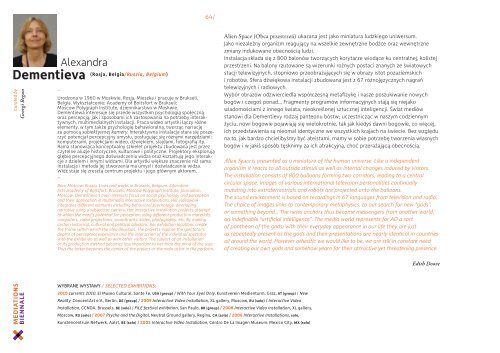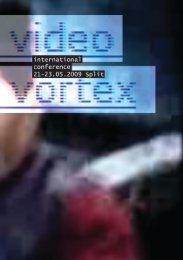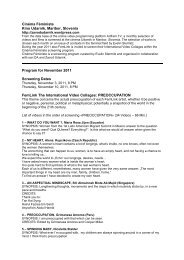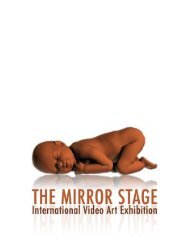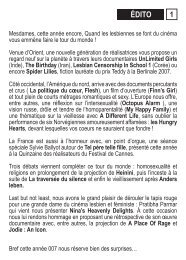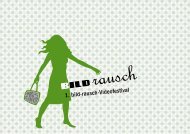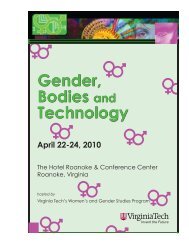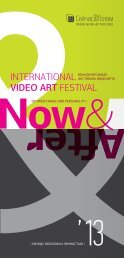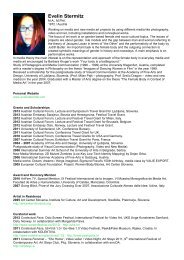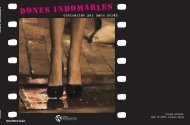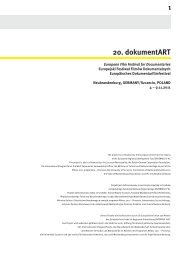PoznaÅ
PoznaÅ
PoznaÅ
Create successful ePaper yourself
Turn your PDF publications into a flip-book with our unique Google optimized e-Paper software.
64/<br />
Alexandra<br />
(Rosja, Belgia/Russia, Belgium)<br />
Dementieva<br />
Curated by<br />
Georgi Begun<br />
_<br />
Urodzona w 1960 w Moskwie, Rosja. Mieszka i pracuje w Brukseli,<br />
Belgia. Wykształcenie: Academy of Boitsfort w Brukseli;<br />
Moscow Polygraph Institute, dziennikarstwo w Moskwie.<br />
Dementiewa interesuje się przede wszystkim psychologią społeczną<br />
oraz percepcją, jak i sposobami ich zastosowania na potrzeby interaktywnych,<br />
multimedialnych instalacji. Praca wideo artystki łączy różne<br />
elementy, w tym także psychologię behawioralną, tworząc narrację<br />
za pomocą subiektywnej kamery. Interaktywna instalacja stara się poszerzyć<br />
potencjał percepcyjny umysłu, posługując się różnymi narzędziami:<br />
komputerami, projekcjami wideo, dźwiękiem, slajdami, fotografią itp.<br />
Rama stanowiąca konceptualny szkielet projektu zbudowana jest przez<br />
czytelne aluzje historyczne, kulturowe i polityczne. Projektory eksplorują<br />
głębię percepcyjnego doświadczenia widza oraz kształtują jego interakcje<br />
z dziełem i innymi widzami. Dla artystki większe znaczenie niż sama<br />
instalacja i metoda jej stworzenia ma umysł i doświadczenie widza.<br />
Widz staje się zresztą centrum projektu i jego głównym aktorem.<br />
_<br />
Born Moscow, Russia. Lives and works in Brussels, Belgium. Education:<br />
Arts Academy of Boitsfort, Brussels; Moscow Polygraph Institute, Journalism,<br />
Moscow. Dementieva’s main interests focus on social psychology and perception<br />
and their application in multimedia interactive installations. Her videowork<br />
integrates different elements including behavioral psychology, developing<br />
narrative using a subjective camera. Her interactive installation projects attempt<br />
to widen the mind’s potential for perception using different production materials:<br />
computers, video projections, soundtracks, slides, photography, etc. By making<br />
certain historical, cultural and political allusions, her exhibition locations create<br />
the frame within which the idea develops. The projects explore the spectator’s<br />
depths of perceptual experience and the interaction of the individual spectator<br />
with the exhibition as well as with other visitors. The subject of an installation<br />
or its production method becomes less important to her than the mind of the user.<br />
Thus the latter becomes the center of the project or the main actor in the perform.<br />
Alien Space (Obca przestrzeń) ukazana jest jako miniatura ludzkiego uniwersum.<br />
Jako niezależny organizm reagujący na wszelkie zewnętrzne bodźce oraz wewnętrzne<br />
zmiany indukowane obecnością ludzi.<br />
Instalacja składa się z 800 balonów tworzących korytarze wiodące ku centralnej, kolistej<br />
przestrzeni. Na balony rzutowane są wizerunki rożnych postaci znanych ze światowych<br />
stacji telewizyjnych, stopniowo przeobrażających się w obrazy istot pozaziemskich<br />
i robotów. Sfera dźwiękowa instalacji zbudowana jest z 67 różnojęzycznych nagrań<br />
telewizyjnych i radiowych.<br />
Wybór obrazów odzwierciedla współczesną metafizykę i nasze poszukiwanie nowych<br />
bogów i czegoś ponad... Fragmenty programów informacyjnych stają się niejako<br />
wiadomościami z innego świata, nieokreślonej sztucznej inteligencji. Świat mediów<br />
stanowi dla Dementievy rodzaj panteonu bóstw; uczestnicząc w naszym codziennym<br />
życiu, nowi bogowie pojawiają się wielokrotnie, tak jak kiedyś dawni bogowie, co więcej,<br />
ich przedstawienia są nieomal identyczne we wszystkich krajach na świecie. Bez względu<br />
na to, jak bardzo chcielibyśmy być ateistami, mamy w sobie potrzebę tworzenia własnych<br />
bogów i w jakiś sposób tęsknimy za ich atrakcyjną, choć przerażającą obecnością.<br />
Alien Space is presented as a miniature of the human universe. Like a independent<br />
organism it reacts to all outside stimuli as well as internal changes induced by visitors.<br />
The installation consists of 800 balloons forming two corridors, leading to a central<br />
circular space. Images of various international television personalities continually<br />
mutating into extraterrestrials and robots are projected onto the balloons.<br />
The sound environment is based on recordings in 67 languages from television and radio.<br />
The choice of images links to contemporary metaphysics, to our search for new “gods”,<br />
or something beyond... The news anchors thus become messengers from another world,<br />
an indefinable “artificial intelligence”. The media world represents for AD a sort<br />
of pantheon of the gods; with their everyday appearance in our life they are just<br />
as repeatedly present as the gods and their presentations are nearly identical in countries<br />
all around the world. However atheistic we would like to be, we are still in constant need<br />
of creating our own gods and somehow yearn for their attractive yet threatening presence.<br />
Edith Doove<br />
WYBRANE WYSTAWY / SELECTED EXHIBITIONS:<br />
2010 currents 2010, El Museo Cultural, Sante Fe, USA (group) / With Your Eyes Only, Kunstverein Medienturm, Graz, AT (group) / New<br />
Reality, ConcentArt e.V., Berlin, DE (group) / 2009 Interactive Video Installation, XL gallery, Moscow, RU (solo) / Interactive Video<br />
Installation, CCNOA, Brussels, BE (solo) / FILE festival exhibition, San Paulo, BR (group) / 2008 Interactive Video Installation, XL gallery,<br />
Moscow, RU (solo) / 2007 Psyche and the Digital, Neutral Ground gallery, Regina, CA (solo) / 2006 Interactive Installations, solo,<br />
Kunstencentrum Netwerk, Aalst, BE (solo) / 2005 Interactive Video Installation, Centro De La Imagen Museum, Mexico City, MX (solo)


